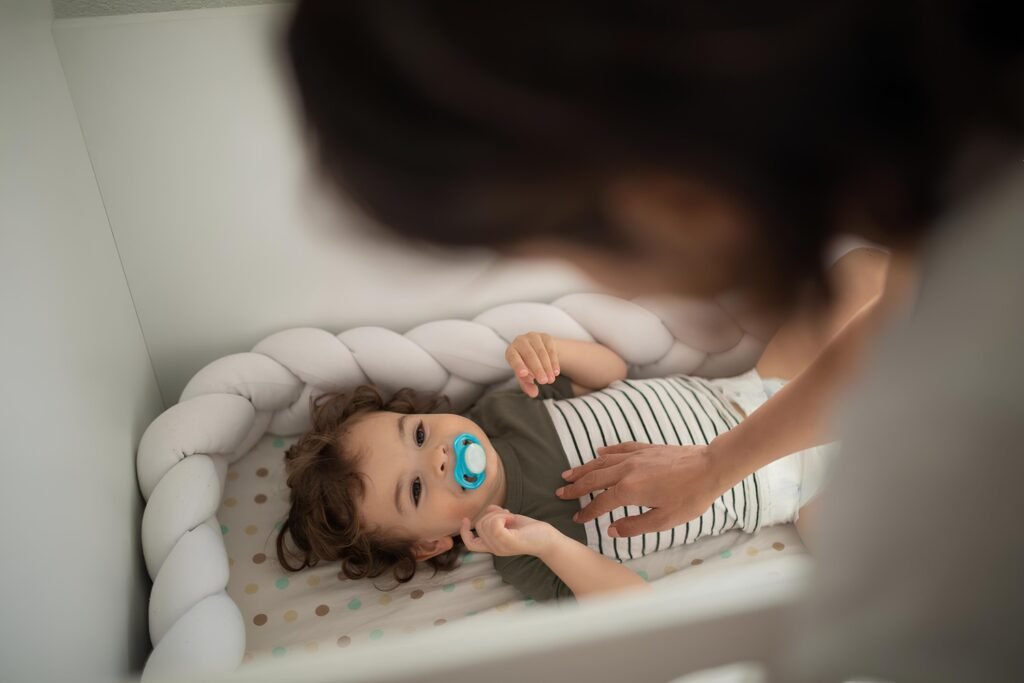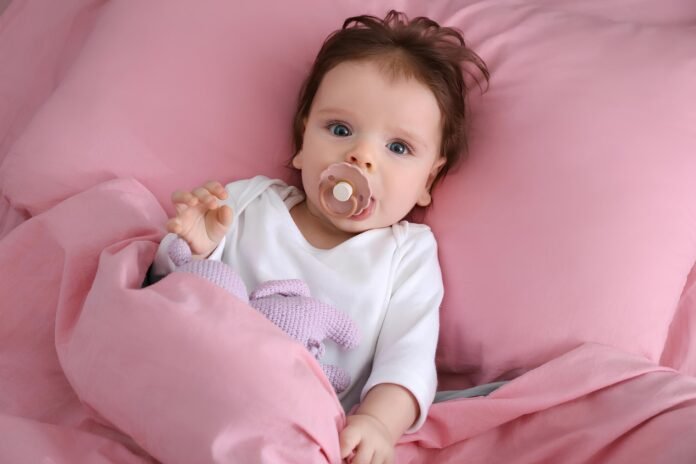Welcome to the world of parenting, where every choice you make for your little one can spark a universe of discussions. Among the myriad of decisions, the use of pacifiers in infancy is one that often leaves parents pondering and professionals debating, Pacifiers have been a staple in the caretaker’s toolkit, offering a semblance of peace by soothing fussy infants and providing a temporary distraction. However, the decision to use a pacifier is not without its controversies. From dentists to pediatricians, and of course, fellow parents, everyone seems to have an opinion on the matter, In this article, we delve into the 5 Vital Truths About Pacifiers All Moms and Dads Should Know. We’ll explore the benefits and the precautions, the right time for introduction, and the signs that it’s time to let go. Whether you’re a new parent or a seasoned pro, these insights will equip you with the knowledge to navigate the pacifier terrain with confidence, So, let’s embark on this journey of discovery, where we unravel the facts and lay to rest the myths surrounding pacifiers. After all, caring hearts and growing minds begin with informed choices.
1. The Benefits of Pacifier Use
The pacifier, often seen as a symbol of comfort for babies, has been the subject of much debate. Yet, amidst the discussions, several benefits have been consistently observed.
Soothing Effects on Babies The primary benefit of pacifiers lies in their ability to soothe and calm babies. Sucking is a natural reflex that is both comforting and calming for infants. It can help settle a baby who is fussy, aid in falling asleep, and provide a source of comfort when parents are not immediately available.
Potential for Reduced Risk of SIDS Sudden Infant Death Syndrome (SIDS) is a parent’s worst nightmare, and while its causes are multifaceted, studies have suggested that pacifier use during sleep can reduce the risk. The American Academy of Pediatrics suggests that offering a pacifier at naptime and bedtime might reduce the risk of SIDS, although the exact mechanism is not well understood.
When It’s Appropriate to Introduce a Pacifier The timing for introducing a pacifier is crucial. It’s generally recommended to wait until breastfeeding is well-established, typically around 3 to 4 weeks of age. This helps avoid nipple confusion and ensures that the baby has developed a good feeding pattern.
2. The Right Way to Introduce a Pacifier

Introducing a pacifier to your infant should be a careful process, taking into consideration the timing, the choice of pacifier, and hygiene practices.
Choosing the Right Time to Start As mentioned earlier, the right time to introduce a pacifier is after breastfeeding has been established. This helps to ensure that the pacifier does not interfere with the development of a healthy breastfeeding routine.
Selecting the Correct Pacifier Size and Material Pacifiers come in various sizes and materials. It’s essential to choose a size appropriate for your baby’s age to prevent choking hazards. The material should be durable, BPA-free, and easy to clean. Silicone pacifiers are a popular choice as they are sturdy and easy to sterilize.
Tips for Safe Pacifier Hygiene Maintaining pacifier hygiene is critical to prevent the spread of germs. Here are some tips:
- Sterilize the pacifier before its first use and regularly thereafter.
- Replace pacifiers regularly, especially if you notice wear or damage.
- Avoid sharing pacifiers between children to prevent the spread of bacteria.
- Keep the pacifier clean by washing it with soap and water and drying it thoroughly.
3. Understanding Pacifier Weaning
The journey of weaning a child off a pacifier is a pivotal moment in parenting. It’s a transition that requires attentiveness to your child’s readiness and a thoughtful approach to change.
Recognizing the Signs of Readiness Children will exhibit various signs indicating they may be ready to part with their pacifier. These signs can include a natural decline in interest, the ability to self-soothe without the pacifier, or even using it less frequently. It’s important for parents to be observant and responsive to these cues, as they signal a prime opportunity to begin the weaning process.
Strategies for Gradual Weaning A gradual approach to weaning can help ease the transition for your child. Here are some strategies to consider:
- Introduce a comfort object, like a soft toy or blanket, to replace the pacifier.
- Set specific times when the pacifier is allowed, gradually reducing its use.
- Offer praise and encouragement for not using the pacifier, reinforcing the child’s ability to self-soothe.
Coping with Weaning Challenges Weaning from the pacifier can be met with resistance and setbacks. To navigate these challenges:
- Maintain a consistent routine to help your child adjust.
- Provide extra comfort and reassurance during this period of change.
- Be patient and allow your child to progress at their own pace.
4. The Potential Downsides of Prolonged Pacifier Use

While pacifiers serve a purpose in early infancy, extended use can lead to complications that parents should be aware of.
Dental Issues from Long-Term Use Prolonged pacifier use can lead to dental problems such as malocclusions, where the teeth do not align properly when the mouth is closed, and can affect the development of the mouth and jaw.
Impact on Speech and Language Development Extended pacifier use may also interfere with speech and language development. It can limit the opportunity for babbling and speaking, which are critical for language learning.
Mitigating the Risks To mitigate the risks associated with prolonged pacifier use:
- Monitor and limit the use of the pacifier, especially beyond the age of 2.
- Encourage your child to express needs and emotions through words.
- Consult with pediatric healthcare providers for personalized guidance.
understanding the nuances of pacifier weaning and the potential downsides of prolonged use is essential. By recognizing the signs of readiness, employing thoughtful weaning strategies, and being aware of the risks, parents can support their child’s development effectively.
5. Balancing Pacifier Use with Emotional Development
Navigating the intersection of pacifier use and emotional development is a nuanced aspect of parenting. Pacifiers can be both a source of comfort and a tool for self-regulation, but as children grow, the balance shifts towards fostering greater emotional independence.
The Role of Pacifiers in Emotional Self-Regulation In the early stages of life, pacifiers serve as a valuable aid for emotional self-regulation. The act of sucking on a pacifier can have a calming effect, helping to manage feelings of distress or overstimulation. For infants, this can mean the difference between a peaceful nap and a stressful ordeal.
Encouraging Other Forms of Comfort as Children Grow As children develop, they begin to acquire a range of skills for self-soothing. Parents can encourage this growth by introducing alternative forms of comfort. This might include cuddling with a parent, holding a favorite toy, or engaging in calming activities like reading a book together.
Fostering Independence Without the Pacifier The gradual move away from pacifier dependence is a significant step towards emotional maturity. Encouraging children to express their emotions and needs verbally, rather than relying on a pacifier, supports their ability to self-regulate without it.
🌟 Our Pacifiers Suggestion



Throughout this article, we’ve explored the multifaceted role of pacifiers in a child’s life. From the soothing beginnings to the complexities of weaning, pacifiers are more than just a source of comfort; they’re a part of the parenting journey, As we conclude, it’s important to remember that every child is unique, and so too is their relationship with their pacifier. Parents are encouraged to observe their child’s cues, consider their individual needs, and make informed decisions about pacifier use, We invite you to share your experiences and tips regarding pacifier use. Your insights could be a source of support and guidance for fellow parents navigating similar paths.
🌟 more trendy


